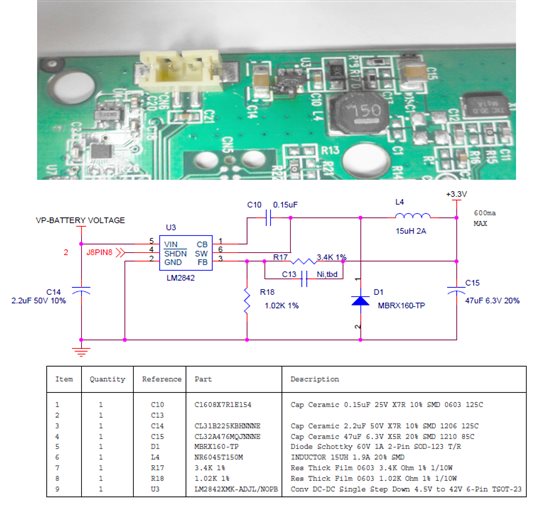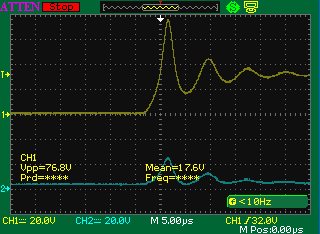This is the first run of these boards, (we made 20 prototypes) What happened was we tested all 20 boards with Vin of the lm2842 at +12Volts all 20 boards worked.The customer said they wanted it tested at +36Volts as that’s what they will be using for Vin. My bench power supply could not go that high so I was using +32.8volts instead of +36V and retested the boards
4 of the boards that previously worked at +12V had the LM2842 instantly go up in smoke and flames when Vin was +32.8V. the other 16 board work correctly.
The LM2842 is rated for working up to 42V with a 45V max Input , so the 32-36V is clearly well within the operating spec of this device.It’s internally compensated so you can’t make a mistake there, and if it operated at +12Vin, then there clearly shouldn’t be an over-current issue (since Vout and the Load should not have changed at all).
we need some help determining why the LM2842 burned up and dammaged 4 out of 20 boards.
FYI, Pin 4 the shutdown pin was connected to Vin for this test.
below is a picture of the smoked board (U3 the Lm2842 is burned ) and the power supply part of our schematic
After the Lm2842 burned we remove the Lm2842 and the board now measures as shorted on the +3.3V output to GND (.03ohms) we think this is because when the LM2842 failed it damaged the TMS320F28032PNS that we have on the board. before applying the +32,8V the boards did not measure as shorted, we acutally measured across C15 the 47uf output cap before applying power the first time (first time turn on we used +12V as Vin ) and all the board measured about 4.3K across c15, (measure with the board off)
before Testiing at +32.8V with a Vin of +12V applied , All the boards turned on and we measured the proper output of about +3.3V our lowest reading was +3.28V and our highest was +3.31V
So this problem has us puzzled.





